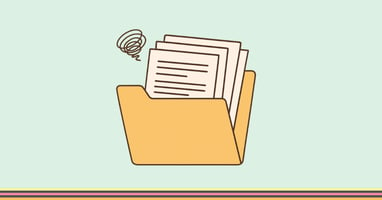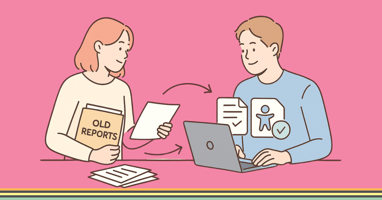Learn about the importance of complying with Web Content Accessibility Guidelines (WCAG 2.0) for...
The WCAG Compliance Gap: Why Old Documents Put Organisations at Risk

Accessibility isn’t just about new content. Legacy documents that remain online can still create compliance, legal, and exclusion risks. Here’s how to close the WCAG compliance gap and keep your organisation truly inclusive.
Accessibilty doesn't end with new content
When organisations publish new reports, forms, or training materials, accessibility is often front of mind. Teams check PDFs against WCAG 2.2, add alt text, and build structures to meet compliance. But what about the documents already sitting online? These older legacy files are often forgotten and that’s where the compliance gap begins.
Old doesn't mean irrelevant
Archived documents may be years old, but if they remain available on your website, they’re still public information. That means they’re subject to the same accessibility requirements as any newly published file. An inaccessible PDF isn’t just inconvenient, it also blocks access for people with disabilities, creates compliance breachers under the new WCAG 2.2 and it can hinder your organisation's reputation as inclusive.
The risks of ignoring legacy content
When legacy documents are left unremediated, organisations expose themselves to three main risks:
-
Compliance risk: Failure to meet accessibility requirements under WCAG 2.2.
-
Legal risk: In Australia, accessibility isn’t optional. It’s linked to anti-discrimination laws.
-
Exclusion risk: Critical information remains inaccessible to users who rely on assistive technology.
How to close the compliance gap
Closing the compliance gap begins with recognising that accessibility is an ongoing responsibility, not a one-off project. Start by auditing your document library to identify inaccessible PDFs and videos. From there, prioritise high-use files such as forms, policies, and training materials. Finally, begin remediating legacy documents so that they meet WCAG 2.2 requirements and can be used by everyone.
At Meet Aandi, we specialise in legacy document remediation, helping organisations transform archives into fully accessible, inclusive content. Whether it’s a backlog of PDFs or training videos that need captions and transcripts, our Legacy Package makes it possible to steadily close the compliance gap without stress.
Accessibility doesn’t stop with what you publish today. Closing the compliance gap ensures your entire library - past and present - is accessible to everyone.
See how the Legacy Package can help →




